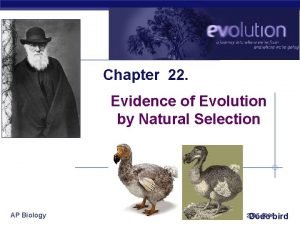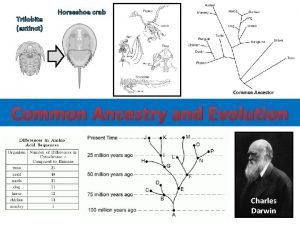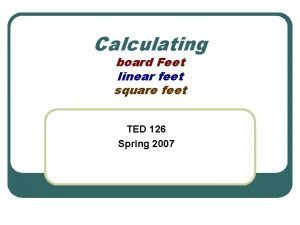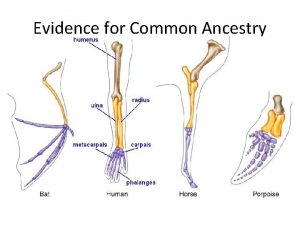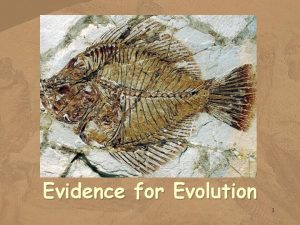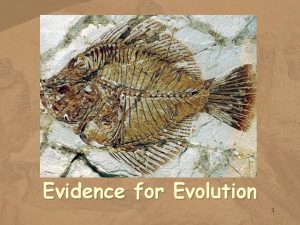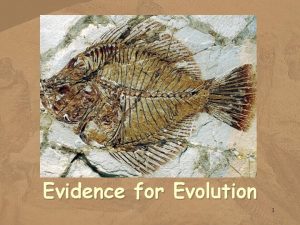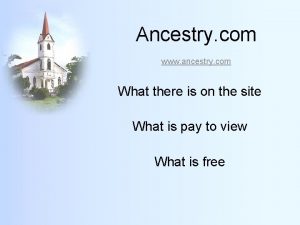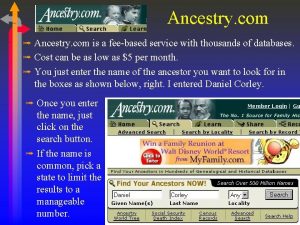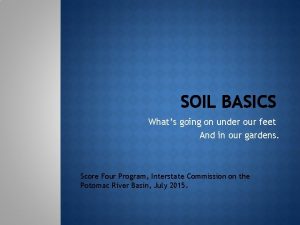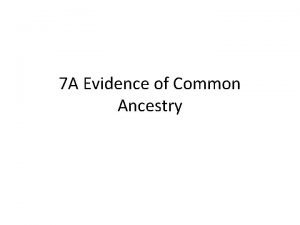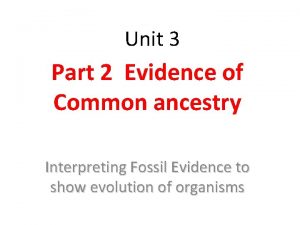Whats Under Our Feet Evidence of Common Ancestry












- Slides: 12


What’s Under Our Feet? Evidence of Common Ancestry and Diversity

Essential Question How can we use patterns in fossils to understand the diversity of life forms that have existed in the past and in the present?

Lesson Objectives We will use information about the number, locations, and kinds of different fossils in Oklahoma: • to make inferences about life in the past and how life has changed over time; and • to analyze the relationships among living things based on similarities in physical appearance.

What do you notice? What do you wonder? Write one thing you notice and one thing you wonder when you look at these images.

Where are these fossils in Oklahoma? • • • Go to paleobiod. org and use your handout as a guide. Your screen should look like this. Select the “Explore” button.

Where are these fossils in Oklahoma? • • • Now, your screen should look like this. Each dot represents a collection of fossils. The larger the dot, the bigger the collection.

Scientific Names • All livings things have a binomial, or scientific, name. • • • Binomial means it consists of two terms (e. g. , Homo sapiens). Common names often change by region and language, so scientists use binomial names to ensure everyone knows what organism is being discussed. The website you will use is an actual database of fossils found all over the world, so it uses only scientific names to ensure consistency.

Where are these fossils in Oklahoma? • In the search box on the topright side of the screen, type the phylum name Cnidaria. • This is the group that the organism from the beginning of the lesson belongs to. • • Zoom in and drag to show mainly Oklahoma on the map. Follow the directions on the handout and answer each question with your group.

3 -2 -1 On your handout, answer the following questions based on what you have learned so far: 3. What are three inferences you can make about the animal you chose to investigate? 2. What are two things you found interesting about the animal you chose to investigate? 1. Describe one modern-day animal you think might be related to the animal you chose to investigate. Explain your answer.

Extending Your Knowledge Work in your groups to create a presentation that includes: • • • The name of the species (both the common and scientific names). A picture or drawing of the organism. The location on an Oklahoma map where its fossils are usually found. • Use paleobiodb. org for this. The time frame in which the organism was alive. When did it go extinct? A description of other species that are anatomically similar to your species. Would these species have existed before or after yours? Why? A prediction about the environment the organism would’ve lived in. • Include the amount of water/rainfall, plants found in the area, temperature, and physical landscape.

Tweet Up Choose ONE of the following prompts and respond with a tweet. Use 280 characters or fewer and include a hashtag. • • What patterns do you notice about the diversity and complexity of life over time? • How might changes in the environment affect the patterns of diversity we see in the fossil record? • How can fossils be used as evidence that modern-day species are related to species from the past? What similarities or differences do the fossil species from the beginning of the lesson have compared with the modern-day species?

